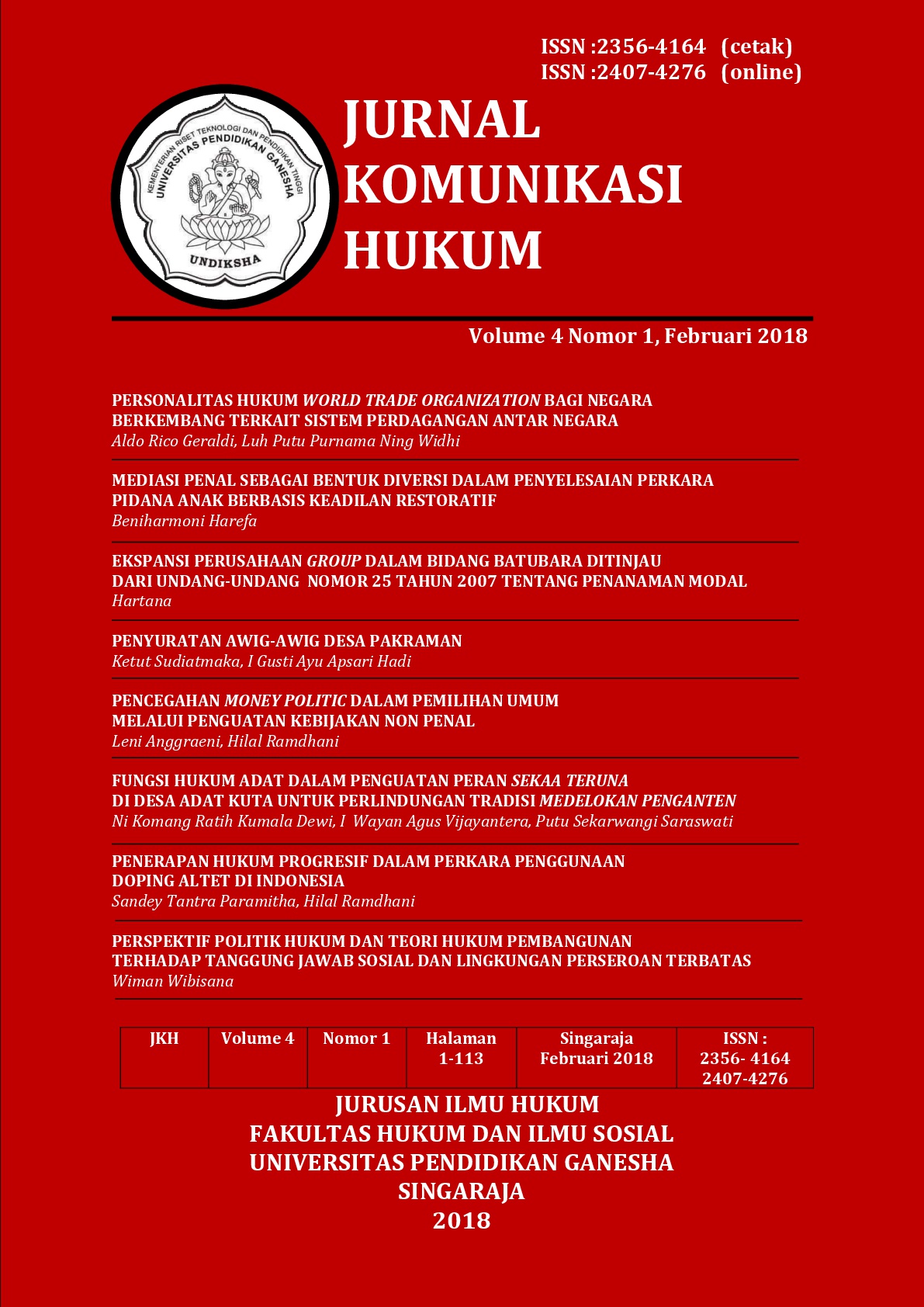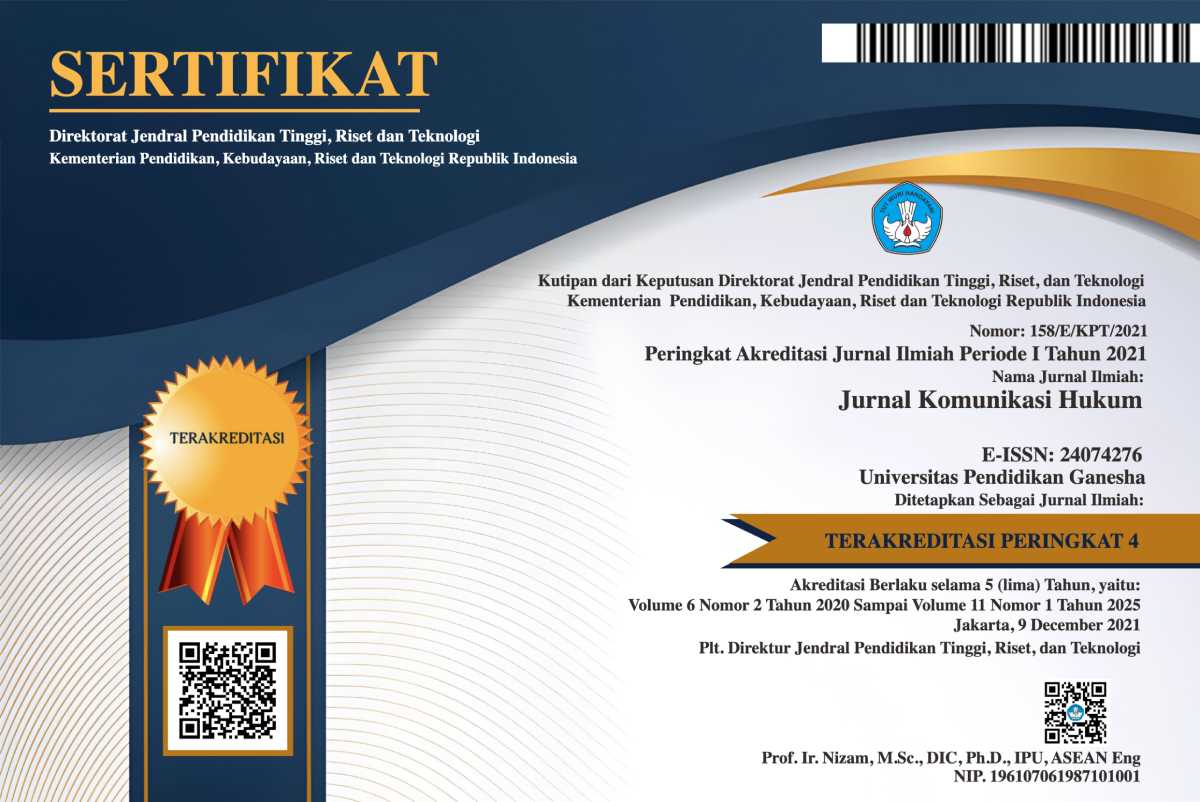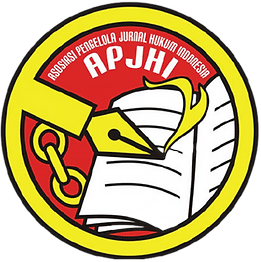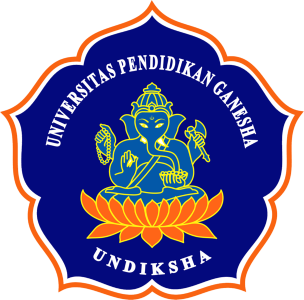YURIDICAL ANALYSIS TO THE CONCEPT OF EXCLUSIVE ECONOMIC ZONES AND CONTINENTAL SHELF RELATING TO THE ISLAND OF SENKAKU / DIAOYU BETWEEN JAPAN AND CHINA BASED ON THE UNITED NATIONS CONVENTION ON THE LAW OF THE SEA 1982
DOI:
https://doi.org/10.23887/jkh.v3i2.11819Keywords:
Keywords, Archipelagic State, Exclusive Economic Zones, Continental Shelf, Senkaku/DiaoyuAbstract
This study aims to analyze the concept of an archipelagic state associated with the 1982 Sea Law Convention. In addition, this study also analyzes the dispute resolution of the exclusive economic zone and the continental shelf over the Senkaku / Diaoyu Islands claim between Japan and China.
This research uses normative legal research by examining a rule, principles, and legal doctrines related to the problems in this research to generate an argumentation. The data were collected by using literature study method by collecting legal materials and information in the form of primary, secondary, and tertiary legal materials. In order to obtain clear exposure, the data is then arranged systematically and analyzed using descriptive method.
The results of this study indicate that the archipelagic country is a country whose entire territory consists of one or more islands, including other interconnected islands, including waters among others and other natural forms. Furthermore, regarding the dispute of the Senkaku / Diaoyu archipelago, Japan can make measurements related to ZEE whose distance should not exceed 200 nautical miles measured from the same baseline and used to measure the width of its territorial sea. While related to China for the territorial sea width can reach a distance of 200 nautical miles from the base line used to set the width of its territorial sea, if the outer edge of the continental edge does not reach that distance.
Downloads
Published
How to Cite
Issue
Section
License
Authors who publish with this journal agree to the following terms:- Authors retain copyright and grant the journal right of first publication with the work simultaneously licensed under a Creative Commons Attribution License that allows others to share the work with an acknowledgement of the work's authorship and initial publication in this journal.
- Authors are able to enter into separate, additional contractual arrangements for the non-exclusive distribution of the journal's published version of the work (e.g., post it to an institutional repository or publish it in a book), with an acknowledgement of its initial publication in this journal.
- Authors are permitted and encouraged to post their work online (e.g., in institutional repositories or on their website) prior to and during the submission process, as it can lead to productive exchanges, as well as earlier and greater citation of published work (See The Effect of Open Access).
Authors who publish with this journal agree to the following terms:
- Authors retain copyright and grant the journal right of first publication, with the work [SPECIFY PERIOD OF TIME] after publication simultaneously licensed under aCreative Commons Attribution License that allows others to share the work with an acknowledgement of the work's authorship and initial publication in this journal.
- Authors are able to enter into separate, additional contractual arrangements for the non-exclusive distribution of the journal's published version of the work (e.g., post it to an institutional repository or publish it in a book), with an acknowledgement of its initial publication in this journal.
- Authors are permitted and encouraged to post their work online (e.g., in institutional repositories or on their website) prior to and during the submission process, as it can lead to productive exchanges, as well as earlier and greater citation of published work (See The Effect of Open Access).












